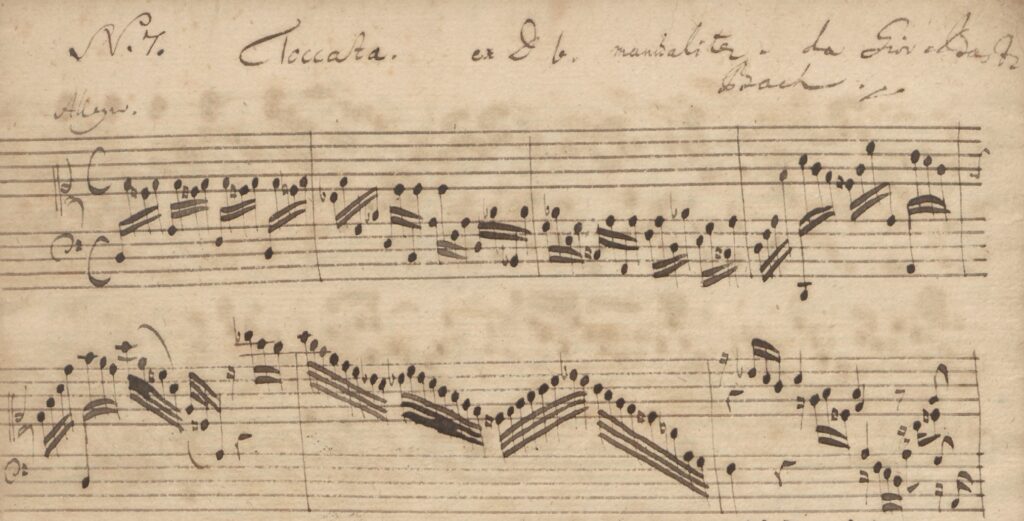Although never conceived as a set, the seven keyboard Toccatas from Bach’s early years (probably from the Weimar period) are frequently grouped together. They don’t include pedal parts, so they are usually performed on the harpsichord, although they are also suitable for the organ manuals. They are characterized by several sections of different character and tempo, many with an improvisatory style (“stylus fantasticus”), flowing into each other sometimes uninterrupted, sometimes as distinct movements.
This is the young Bach experimenting and forging his virtuoso style, following on the footsteps of older German masters such as Buxtehude, Reincken and Bruhns, as well as his own elders. As he always did, he followed the framework of the older German toccata but put on it a distinct personal stamp – adding more challenging passagework and runs in the adagios, more harmonic surprises and chromaticism, and higher-order counterpoint, especially in the fugues.
These toccatas have all come down to us not as autographs, but as copies made by people in Bach’s close circle. The fact that Bach didn’t make his own copies or put much care into having them preserved, speaks to the fact of him realizing that the style was getting outdated and not seeing much value in using the compositions as teaching tools.

Toccata BWV 913 is probably the oldest of the set (composed in 1704 and later revised in 1708) and is also the longest one. The opening section has the free-flowing feel typical of a toccata, and 15 bars in it flows into a more regular, patterned motif in 4 parts that leads into the fugue. In typical fashion, the fugue ends with a few bars in free form. Then, a curious adagio uses a motif with repeated notes answered with chords, creating the impression of a dialog as the material moves between the voices. The adagio leads to a second fugue in ternary tempo, marked allegro, which features two subjects one measure apart.
The harpsichord utilized in this recording was built by Jukka Ollikka (Prague) in 2018, after Michael Mietke, German harpsichord builder of the late 1600’s.
